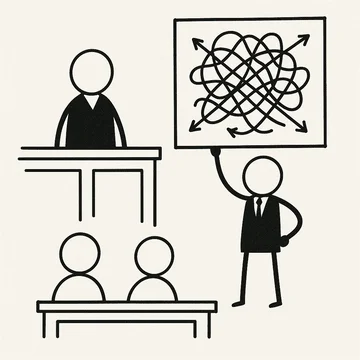
Sir Isaac Newton once wrote to Robert Hooke (Hooke’s Law): “If I have seen further, it is by standing on the shoulders of giants.” This quote was the cornerstone on which I built my 5th grade graduation speech, because it seemed to be an eloquent way to say “don’t reinvent the wheel”.
Judge Hatcher appears to be building on the knowledge accumulated by judges occupying the bench before her. In particular, Judge Hatcher’s new form Scheduling Order for patent cases seems strongly inspired by Judge Hall’s and Judge Burke’s form orders.
Here are a few differences . . .
- Omits the paragraph on the unavailability of the ADR Process. This indicates that the Court expects litigants to be aware of the Court’s Standing Order by now without reminder.
- Does not set a deadline to receive courtesy copies, but states that copies of exhibits and attachments should separated by tabs, highlighted, and be kept to volume-minimum.
- For motions to amend or strike, requires parties to follow standard discovery dispute procedure (3-page letter briefs), like Judge Hall, unlike Judge Burke’s five-page procedure.
- Makes Technology Tutorials mandatory by omitting language in Judge Hall’s and Judge Burke’s scheduling orders that made them optional.
Discovery and Protective Order Dispute Procedures
Judge Hatcher is mirroring the forms used by Judge Hall and Judge Fallon for dispute procedures. Truthfully, all three forms look practically identical, and require parties to file a motion for teleconference to obtain a hearing date, listing the issues in dispute, the details of any prior meet and confers, and three proposed hearing dates that are mutually agreeable to the parties.
Once a hearing date is set, all the judges follow a standard discovery/protective order dispute procedure: the moving party first files a concise letter brief, soon followed by a concise responsive letter brief from any party opposing the application for relief.
Joint Claim Construction Chart and Brief
Like Judge Noreika, Judge Hatcher does not want intrinsic evidence (including the patent(s) at issue) attached to the claim chart. Instead, those cited resources should attached to the Joint Claim Construction Brief.
Judges Hall and Burke also warn parties not to include any general summaries of the law relating to claim construction in their Joint Claim Construction Briefing (or at the Markman hearing), whereas Judge Hatcher does not.
Judge Hatcher requires parties to state the order in which they intend to present the claim terms at issue, including which side will present first for each term when the Joint Claim Construction Brief is due. This requirement is borrowed from Judge Burke.
Also like Judge Burke, Judge Hatcher advises that the Court will endeavor to issue its claim construction order within 60 days of the hearing.
Daubert and Case Dispositive Briefing
Daubert briefing in Judge Hatcher’s cases conforms to the Court’s Local Rules, as modified in similar style to Judge Hall and our other judges, allowing an unlimited number of motions but with a maximum of 40 pages per side (or 50 w/ Daubert motions). She does not include a paragraph setting a hearing date for case dispositive and Daubert motions. Presumably, any hearing date will be ordered later on in the case.
Pretrial Order and Trial
Judge Hatcher refers to an as-yet-unpublished “Preference and Procedures for Civil Cases” that will dictate format of the joint proposed final pretrial order. We'll have to look into that when it arrives.
Finally, if you’re interested in tea leaves: it looks like Judge Hatcher switched “[jury/bench]” to “[bench/jury]” but otherwise kept her “Trial” paragraph identical to the one used by both Judges Hall and Burke. Does this switch mean anything? Probably not, but we toss the fact into the ether for portent-aficionados. I personally tend to list my favorite thing first in any ordered list. But I’ve also been known to list my favorite thing last to obfuscate the fact that I like it. So, might Judge Hatcher have a slight preference for bench or jury trials with respect to the other? I’m reminded of the Battle of Wits scene from The Princess Bride and am left no wiser to the significance (or insignificance) of this edit, which could simply be alphabetizing.
If you enjoyed this post, consider subscribing to receive free e-mail updates about new posts.






